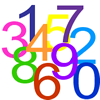Skip over navigation

Dicey Operations
Two and Two
Difference Sudoku
Always a Multiple?
Method in Multiplying Madness?
Power Mad!
Short Problems

Or search by topic
Number and algebra
Geometry and measure
Probability and statistics
Working mathematically
Advanced mathematics
For younger learners
How Numbers Behave

How numbers behave
Our number system uses powers of 10 to express large numbers concisely. These problems have been chosen to help you develop a better understanding of this place value system.
Dicey Operations Age 11 to 14Challenge Level 


Age 11 to 14
Challenge Level 





Who said that adding, subtracting, multiplying and dividing couldn't be fun?
Two and Two Age 11 to 16Challenge Level 


Age 11 to 16
Challenge Level 





How many solutions can you find to this sum? Each of the different letters stands for a different number.
Difference Sudoku Age 14 to 16Challenge Level 


Age 14 to 16
Challenge Level 





Use the differences to find the solution to this Sudoku.
Always a Multiple? Age 11 to 14Challenge Level 


Age 11 to 14
Challenge Level 





Think of a two digit number, reverse the digits, and add the numbers together. Something special happens...
Method in Multiplying Madness? Age 7 to 14Challenge Level 


Age 7 to 14
Challenge Level 





Watch our videos of multiplication methods that you may not have met before. Can you make sense of them?
Power Mad! Age 11 to 14Challenge Level 


Age 11 to 14
Challenge Level 





Powers of numbers behave in surprising ways. Take a look at some of these and try to explain why they are true.
Short Problems Age 11 to 14
Age 11 to 14
A collection of short problems to test your understanding of place value.
You may also like
Patterns in Number Sequences
These resources are designed to get you thinking about number sequences and patterns.

